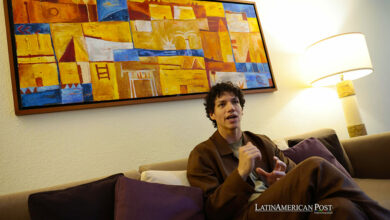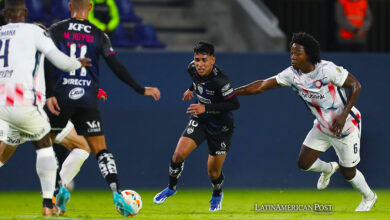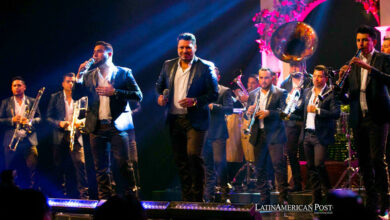Where does the magic of the ‘Culés’ come from?
Football Club Barcelona fans are known as 'Culés' and that nickname dates back a century.

Camp Nou Stadium in Barcelona. / Photo: Pixabay – Reference Image
LatinAmerican Post | Alberto Castaño
Listen to this article
Leer en español: ¿De dónde sale la magia de los ‘Culés’?
It all started when at the beginning of the twentieth century, more precisely during the years between 1909 and 1922, the young team from the capital of Catalonia played their sporting events in a small stadium on the Calle de la Industria in Barcelona, known as 'La Escopidora', a scenario that marked a milestone for the time, as it was the first stadium in Spain to have artificial light to illuminate the matches even though it lacked dressing rooms, so the players had to use attached places to change clothes.
In that small sports scene, which housed one of the greatest football clubs in the world history of this sport, it also housed some six thousand people who flocked to see the team of their loves start this long trajectory of success.
The two-story bleachers were sometimes not enough to accommodate everyone who wanted to enjoy the good football practiced by Barcelona. The solution they found was to sit even on the wall that faced the street, so that those who traveled there could only observe a row followed and long by the perfect and harmoniously aligned 'worthy innkeepers' of the fans they called 'culers', from the Catalan word 'cul 'and which translates' culones' (referring to the ass), pronounced 'culés'.
It was around 1923 that they decided that the small stage had fallen short, moving the club to the Campo de Les Corts, predecessor of the Camp Nou that currently can accommodate about 100,000 people who delight in the football of legend of FC Barcelona.
Read also: Goodbye football! 5 players who retired in 2019
Undoubtedly, one of the most popular teams of all time around the world, where prominent figures of all sizes have passed, of the most diverse nationalities with very prominent playing styles, from the figures of the old guard as Ramon Torralba Larraz who was nicknamed "La Vieja" for his long career at the Barca club, contesting everything Barcelona played between 1914 and 1928.
But it is hardly understandable that many names of the old glories of Barcelona football are not very familiar when talking about more than a century ago. However, if there is a more current remembrance, from the 80's we will remember names such as those of the ineffable Maradona, the Danish Michael Laudrup, the speed records held by the Dutch defense Ronald Koeman and certainly we all remember at least some of the Brazilians who have adorned with the 'beautiful jogo' the Barca team.
Romario, Ronaldo Luiz Nasario, Rivaldo, Ronaldinho, Anderson Luis de Souza 'Deco' or for example who was considered by Louis van Gaal as "the perfect attacker", the unforgettable Dutch striker Patrick Stephan Kluivert, not to mention the "indomitable lion", Cameroonian Samuel Eto'o, who commanded the Barcelona lead for five seasons scoring decisive goals such as in the 2006 Champions League finals in Paris or the 2009 in Rome.
Spaniards such as Puyol, Iniesta, Xavi Hernández, goalkeeper Víctor Valdés or current figures such as Messi, Neymar, Uruguayan Luis Suárez or Arturo Vidal.
Also read: Who is the sportsperson of the year, Megan Rapinoe?
In short, there are many figures, so many that they could only be compared with the number of trophies and cups that the team of the capital of Catalonia has earned in its more than 100 years of existence. Only in the decade between 2008 and 2018, four champions leagues were won and in 2010 there are three team nominees to be deserving of the Ballon d'Or, Messi, Iniesta, and Xavi, showing that the continuity of the model that Cruyff had left and that Guardiola would keep, was a worldwide example. This model consisted of educating, training and bringing up the players of the Barça quarries.
Two Champions Leagues and three League championships, the longed-for Club World Cup, which put him on the highest cusp of world football, a 2009 in which they won six titles, something that any club in the world's most popular sport would like to have.
In its 120 years of history, since the Swiss Hans Gamper, in Spain known as Joan Gamper, founded the club he has won five European Cups, three Club World Cups, four European Cups, 26 League, 30 King's Cups13 Super Cups Spain among many other awards that would make the list endless.





